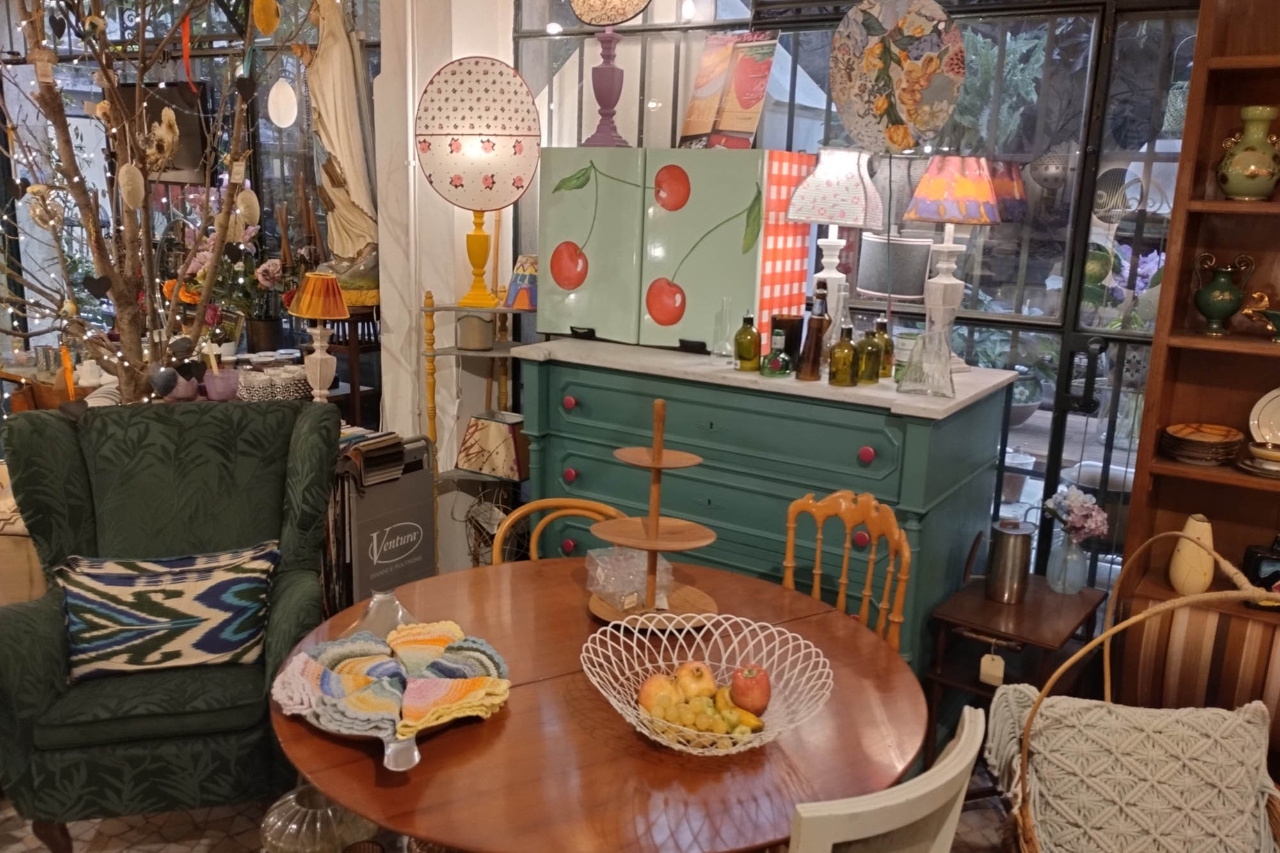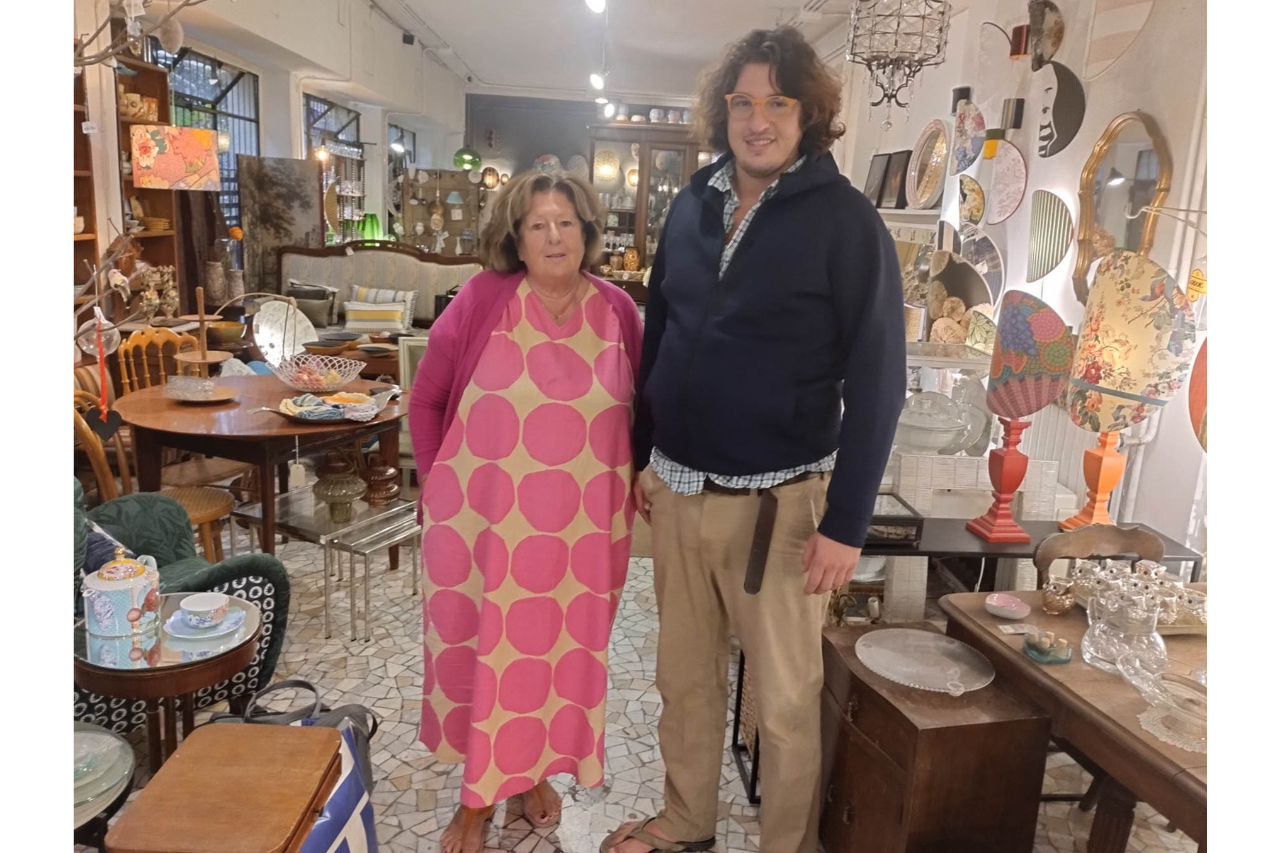






A ‘mixed sea’ space, as Aleksandra Stefanovic defines it, who, together with her son Corso, opened an environment 15 years ago on Via Washington where objects, design, and proposals, both new and vintage, give rise to curious and convenient solutions for the home.
An “eclectic” store in the center of Milan, a space rich in proposals, ideas, and design objects influenced by various cultures. “In Florence, they would call it ‘mixed sea’ because there’s a bit of everything,” says Aleksandra Stefanovic with a contagious smile. Originally from Serbia, her accent proudly reveals her Florentine roots. Having spent much of her life in the cradle of the Renaissance, she has been at the helm of WMilano for 15 years, a welcoming environment located on the central Via Washington, full of new and vintage items that extend from the store to the outdoor courtyard.
What is the concept of WMilano?
“It reflects everyday life. How do you imagine a typical day? Comfortable, cheerful, colorful, also tiring, of course, but that expenditure of energy must be compensated by the home that welcomes us upon our return. Today, a thought is gaining ground that I do not share; there is too much desire to get rid of things we have had for a long time to make room for a new scheme of which we have neither trace nor idea. A representation that does not necessarily reflect our identity, a new model created to give an illusory and deceptive image to the outside, made for the use and consumption of those who would like to impose their style on us. It is a wrong thought that does not meet my favor at all.”
Who are your customers?
“More women than men, aged 35 and up. In recent years, the presence of young people has increased. Thanks also to the new buildings constructed in the area according to modern aesthetic standards and attractive design, sustainable and energy-efficient, the presence of new families has increased, giving new life to a neighborhood where the presence of elderly people was significant.”
What is necessary to attract a young audience to a store?
“First of all, it is necessary to have the right approach towards the customer. Welcome, dialogue, confrontation, and availability are the basic ingredients for establishing a profitable relationship with the interlocutor. It is not enough to have the goods in stock; you need to know how to intrigue the visitor. A circuit that activates by allowing the buyer to freely wander, stimulating their desire to observe and know how that object was created, what the best combinations might be, and learning the history of an item.”
Aleksandra Stefanovic is not just a woman full of advice; she is a volcano of ideas. Having shed the role of the seller, she takes on that of the interior designer.
“Yes, I also do interior design. I go to homes, draft the project, and suggest the furnishings. The first thing I ask the client is: what would you like to keep? It would be too easy to suggest throwing everything away and starting over; I do not consider it a correct solution.”
After 40 years of traveling continuously to meet customer requests, today with WMilano, Stefanovic, with the active contribution of her son Corso, has reached a dimension that gives her great satisfaction.
“Uniqueness combined with reasonable prices, this is what I ask of my brands. What gives me the most satisfaction? Solving a practical problem with a well-made, inexpensive solution.”
“WMilano is a sustainable store,” she adds. “There is a nice mix of old but re-proposed; armchairs, chairs, and sofas redone with original fabrics and a new color concept, for example, as well as furniture and tables.”
What do you like most about your job?
“Buying things that attract me and that I believe can meet the needs of customers and solve a practical problem with a well-made, inexpensive solution.”
What characteristics must your brands have?
“First and foremost, uniqueness combined with reasonable prices.”
What are the most requested items?
“Armchairs and chairs that we reupholster with fabrics we produce, glasses, and plates. Garden furniture, both vintage and new, is also not negligible, and lampshades, handcrafted in our workshop, are highly sought after.”
Every aspect—from the placement of an object within the store to the search for an item that can stimulate the visitor’s imagination—is meticulously curated. For about thirty years, Aleksandra Stefanovic traveled around Italy with American buyers based in Florence, interested in everything tasteful and refined that Italy had to offer. Today, she puts that experience at the disposal of her customers and, as an affable and elegant woman, she is full of advice and spends a long time with visitors to guide them towards a conscious purchase.
“It was a very different period from the current one. Months spent wandering around the Belpaese to satisfy the desires of foreign buyers. In Florence, brass dominated the scene, as did Empoli glass, classic gilded wooden frames, wrought iron chandeliers mixed with ceramics and porcelain. In Udine and its surroundings, the chair district and Murano glass in Venice were widely appreciated, and sales proceeded briskly. Today, the situation has changed radically. In Florence, there are about ten workshops left, and an irreplaceable heritage has been lost.”
How do you judge your relationship with suppliers?
“I have an excellent relationship with my supply chain, from large companies to artisans. I try to establish a personal contact. The secret to success lies in empathy and trust.”
What needs to be done to prevent the closure of historic shops?
“Municipalities, Regions, and the State must support those who have carried on an activity for generations, giving prestige to the territory and the country. Shops with wooden shelves are now a distant memory, and with the closure of these businesses, a cultural stronghold is also lost. High rents have been a blow for many merchants who had to leave to make way for yet another pizzeria and supermarket. It is useless for institutions to place a golden plaque outside the shop with the words ‘historic shop’; it is just a facade operation, a sort of makeup that adds nothing and takes nothing away.”